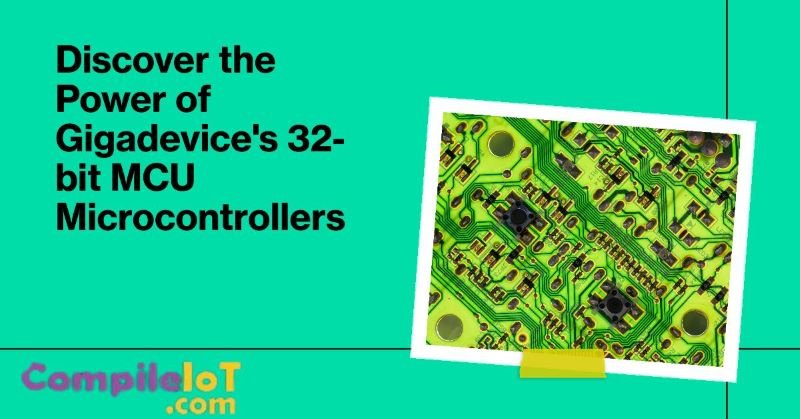The Role of PCBs in Shaping Wearables and Ubiquitous Computing
The world of wearables and ubiquitous computing is evolving rapidly, with an increasing demand for compact, efficient, and reliable electronic devices that seamlessly integrate into daily life. As these technologies advance, so too does the complexity and sophistication of the Printed Circuit Boards (PCBs) that power them. Unlike traditional electronics, wearables require a balance of miniaturization, power efficiency, and performance, pushing PCB designers to think outside the box. This article explores the critical considerations, design strategies, and best practices for developing PCBs for wearables and ubiquitous computing.
Key Design Challenges for Wearable PCBs
1. Size and Form Factor
Wearable devices must be small, lightweight, and comfortable, which imposes strict constraints on PCB design. The primary challenge is to fit complex circuits and multiple components into a small footprint while maintaining functionality. In contrast to traditional PCBs, wearable devices often demand flexible PCBs that can conform to the contours of the body or fit within unconventional spaces, such as wristbands or smart rings.
2. Power Consumption and Efficiency
Power efficiency is one of the biggest challenges for wearables. Since these devices are often battery-powered, minimizing power consumption without sacrificing performance is crucial. Designers must consider the entire system’s power usage—starting from the microcontroller (MCU) to wireless modules like Bluetooth, GPS, and sensors—ensuring that the device can operate for extended periods without frequent recharging.
For instance, low-power modes for sensors and components can dramatically increase battery life, while also minimizing the overall energy footprint. Optimizing the power regulation circuitry and integrating energy harvesting technologies such as solar cells or kinetic energy converters could also enhance wearability.
3. Thermal Management
As components shrink and power density increases, managing heat becomes a challenge. Overheating can affect the performance and reliability of sensitive components. For wearables, effective thermal management solutions are vital to avoid discomfort, especially in devices worn directly on the body. Designers often utilize thermal vias, heat spreaders, and specialized materials like thermally conductive polymers to ensure efficient heat dissipation.
Material Selection for Wearable PCBs
The materials used in wearable PCBs must meet several requirements: flexibility, reliability, and the ability to withstand the stresses of daily wear. Some popular materials include:
| Material | Properties | Applications in Wearables |
|---|---|---|
| Polyimide (PI) | Flexible, high heat resistance, durable | Used for flexible PCBs, wristbands, patches |
| FR-4 | Rigid, cost-effective, available in a wide range of thicknesses and options | Used in rigid areas of wearable devices |
| Liquid Crystal Polymer (LCP) | Low dielectric constant, low loss, excellent high-frequency performance | Used in RF components, wireless modules |
| Flexible Printed Electronics (FPE) | Extremely flexible, integrates embedded electronics with substrates | Used for electronic skin, wearable sensors |
Optimizing PCB Layout for Compact Designs
1. Component Density and Placement
Wearables often require higher component density than traditional devices. This demands careful planning for component placement to ensure there’s sufficient room for routing traces, and that signal integrity is maintained. High-density designs must account for signal interference, especially when components are tightly packed.
Using stacked components or placing components on both sides of the PCB can help maximize available space. Additionally, ensuring that high-speed components are appropriately shielded from noise and placed strategically to minimize cross-talk is essential.
2. Rigid-Flex PCBs for Flexibility and Reliability
Rigid-flex PCBs, which combine rigid and flexible substrates, are ideal for wearables because they provide the durability of a traditional PCB with the flexibility needed for wearable applications. These hybrid designs allow for more robust connectivity while reducing the overall weight and size of the device. Rigid-flex PCBs are particularly useful in applications like smartwatches or fitness trackers where space is limited but a solid, dependable connection is essential.
| Design Type | Description | Advantages |
|---|---|---|
| Rigid PCBs | Traditional, stiff PCBs used for non-flexible sections of wearables | High reliability, solid component mounting |
| Flexible PCBs | Thin, bendable PCBs used for the flexible parts of wearables | Can bend around the body, space-saving |
| Rigid-Flex PCBs | Combination of rigid and flexible sections | Best of both worlds: compact and durable |
3. Soldering and Component Testing
Wearable devices often feature small, fine-pitch components such as chips, resistors, and capacitors, which require precise soldering techniques. Surface-mount technology (SMT) is commonly used, but for small-scale or highly flexible components, flip-chip bonding may be employed for improved reliability and performance.
Testing is another crucial step, especially for wearables that must function flawlessly over long periods. Regular functional testing and stress testing are necessary to ensure that the PCB can withstand the mechanical stress of being worn.
Power Supply and Battery Management
1. Battery Selection
Choosing the right battery is critical for wearables. Common options include Li-ion and Li-polymer batteries, which provide high energy density while maintaining a compact size. However, designers must consider factors such as battery life, charging cycles, and charging time to ensure that wearables can meet user expectations.
| Battery Type | Energy Density | Cycle Life | Application in Wearables |
|---|---|---|---|
| Li-ion | High (150-250 Wh/kg) | 500-1000 cycles | Common in smartwatches, fitness trackers |
| Li-polymer | Moderate (100-150 Wh/kg) | 500-1000 cycles | Flexible designs, lightweight wearables |
| Solid-State | Very High (300 Wh/kg) | 1000+ cycles | Next-gen batteries for extended wearability |
2. Low Power Designs
Low-power consumption is key to increasing the operational time of wearables. Power-saving features like sleep modes, adaptive power scaling, and power gating help extend battery life. Furthermore, power management ICs are used to ensure efficient voltage regulation and prevent power waste during charging or when the device is idle.
Wireless Communication for Wearables
Wireless connectivity is an integral part of most wearables, and the selection of communication protocols directly affects power consumption, range, and data transfer speed. Common wireless technologies used in wearables include:
| Technology | Power Consumption | Typical Range | Use Case |
|---|---|---|---|
| Bluetooth Low Energy (BLE) | Very Low | 10-100 meters | Smartwatches, fitness trackers |
| Near Field Communication (NFC) | Low | 4-10 cm | Mobile payments, data exchange |
| Wi-Fi | High | 30-100 meters | Smart glasses, health-monitoring devices |
| Zigbee | Low | 10-100 meters | Home automation, smart wearables |
Final Thoughts on PCB Design for Wearables and Ubiquitous Computing
The design and manufacturing of PCBs for wearables and ubiquitous computing present unique challenges that require a deep understanding of the device’s needs and the limitations of current technology. The ongoing trend toward smaller, more powerful and highly connected devices will continue to push PCB manufacturers and designers to innovate. By focusing on miniaturization, power efficiency, and user comfort, wearable devices are set to play an increasingly significant role in our daily lives, bringing new possibilities for health, convenience and connectivity.








